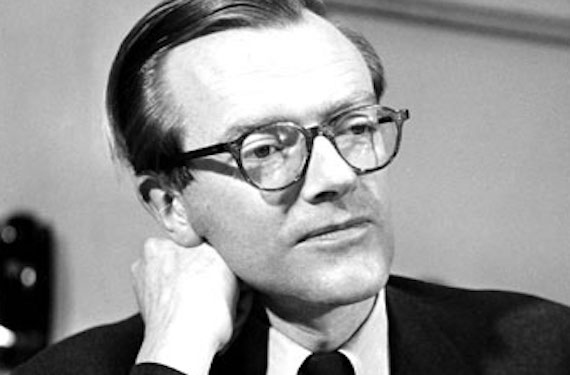Watson and Crick are two names as inextricably linked as Watson and Holmes. Every day, schools and universities around the world are reminded of the two co-discovers of the DNA double helix. But when they both received the Nobel Prize in Physiology or Medicine in 1962, they were joined by a third name, that of Maurice Wilkins. Who was Wilkins, and what did he do to deserve such an honour?

Maurice Hugh Frederick Wilkins (15 December 1916 – 5 October 2004) had an uncomfortable role. He was the third man in the shadows, something that is reflected in the title –chosen by the publisher, not by him– of his autobiography The Third Man of the Double Helix. But most of all, it was often his turn to hear that the third Nobel Prize-winning man should have been a woman, Rosalind Franklin. And although it is true that the crystallographer died of cancer in 1958, four years before the award was granted to her colleagues, so it is also true that she was never even nominated.
Indeed, in the introduction to his book, Wilkins made it clear that his main motivation at the time of writing was precisely to respond to accusations that he, Watson, and Crick had illegitimately taken credit for Franklin’s findings and obscured her role in the story of DNA. Such accusations, Wilkins wrote, had “demonized” the trio and especially him, “the most prominent demon.”
Wilkins, espionage suspect
Born in New Zealand to Irish parents, Wilkins returned to the British Isles at age six to begin his education. His bachelor’s degree in physics and his scientific interests would lead him to become the co-founder of a new branch of science, biophysics. Under the auspices of his mentor and supervisor of his thesis, John Randall, in 1952 Wilkins described in the journal Nature the new biophysical laboratory at King’s College London, built underground in the crypts destroyed by the bombings of World War II.

Along with his scientific career, another trait would mark the trajectory of Wilkins – his pacifist activism. Before the Second World War, he belonged to the Communist Party, which marked him as an espionage suspect. Curiously, with the outbreak of the conflict, he took a respite from his pacifism and dedicated his scientific mind to serving the war effort, which led him to work for the Manhattan project in the development of the atomic bomb.
In his autobiography, he acknowledged that the Hiroshima explosion gave everyone in his laboratory “a joyful sense of achievement,” coupled with the relief of knowing that that achievement ended the war. However, that same afternoon the reflection of a philosopher friend would bring him back to his old pacifist convictions. Years later, especially after the Nobel Prize, he would be involved in the international opposition movement to nuclear escalation.
Competition with Rosalind Franklin
But undoubtedly, what stand out in the biography of Wilkins are the episodes of his studies on DNA and his relationship with Franklin. The physicist’s thesis is that it was all an immense and unfortunate misunderstanding brought about by Randall. Prior to the incorporation of Franklin into the team at King’s College, the researcher was working in Paris, where she applied X-ray techniques to the study of the structure of proteins. At that time, Wilkins was applying the same methods to the fibres of DNA, a line of research that he judged more interesting. Wilkins insisted that Franklin should abandon proteins and also dedicate herself to DNA once she joined Randall’s team. Randall not only agreed with this, but he wrote to Franklin informing her that the DNA line would be her exclusive responsibility. Whatever Randall’s motives were to make such an unforeseen decision, the problem was that he never informed Wilkins about it. The New Zealander would only learn about the contents of that letter after Franklin’s death.
Thus, when Franklin finally joined King’s College, she was annoyed by what she saw as an intrusion of Wilkins into her exclusive area. The latter, for his part, thought that Franklin intended to snatch away his line of research, his samples, his equipment and even his intern, Raymond Gosling. Randall’s mistake had sowed the seeds of discord that made conflict inevitable.
In spite of everything, Wilkins was reproached for showing Watson, without Franklin’s knowledge, the famous 51 photograph taken by Gosling. This image would be the key piece of the puzzle that allowed Watson and Crick to overtake their colleagues in defining the correct structure of DNA. In their celebrated study, published in Nature on 25 April 1953, Watson and Crick thanked Franklin and Wilkins for their “unpublished experimental results and ideas.” In the same issue of the journal, two other articles appeared summarizing respectively the contributions of Wilkins and Franklin. Wilkins would not win the popular recognition, but he did get the Nobel glory; Franklin, on the other hand, died five years later as the big loser in one of the greatest scientific odysseys in history.
Comments on this publication